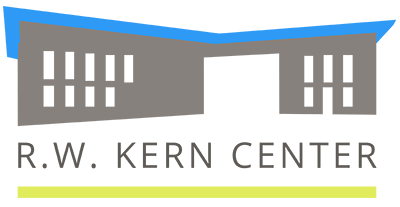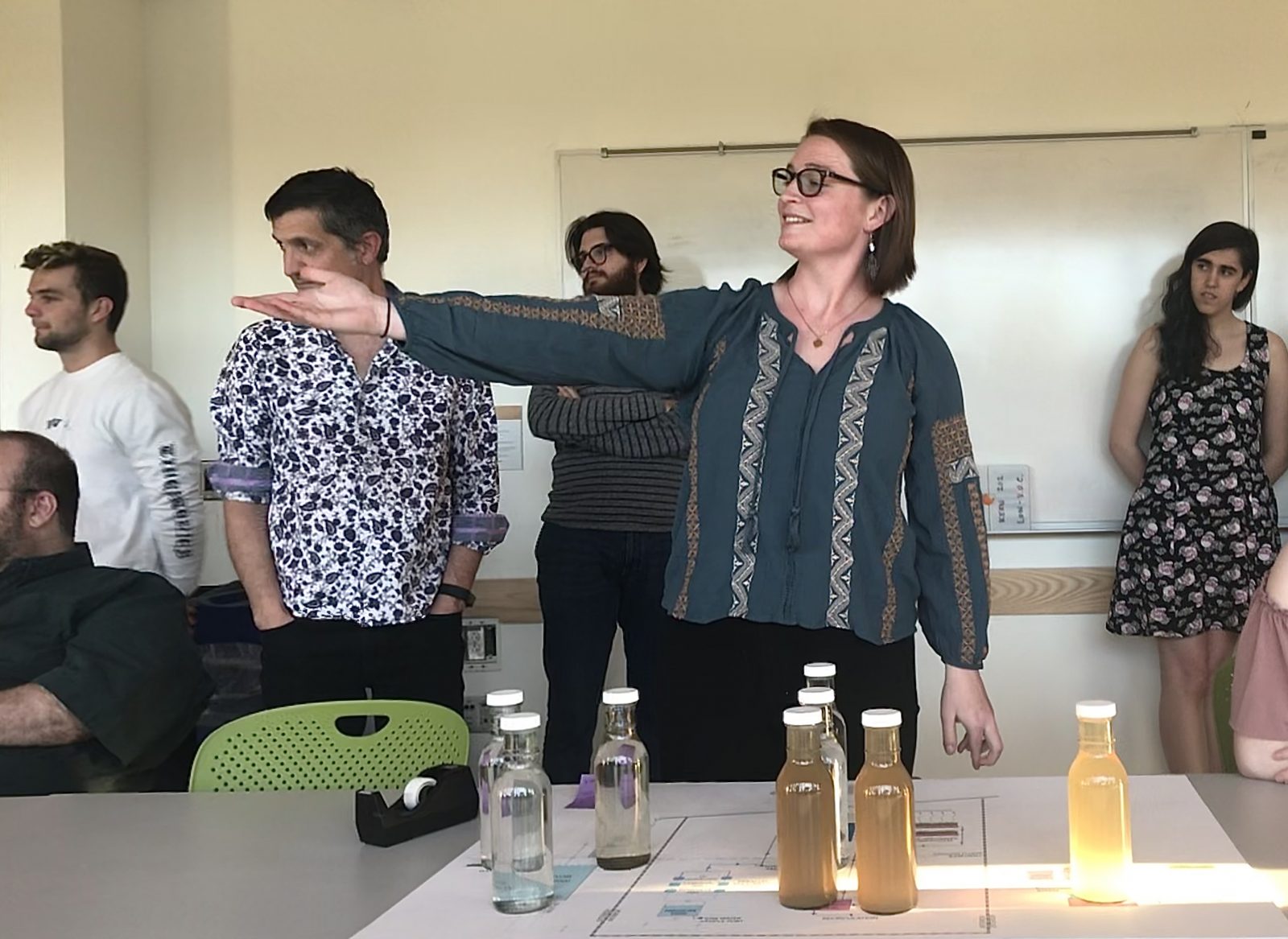As the R.W. Kern Center Coordinator, Claire is responsible for expanding the building’s educational outreach work with visitors of all ages.
In April 2019, I piloted a water workshop at the R.W. Kern Center Symposium. This one-hour workshop was designed to familiarize participants with water flows through the RWKC in an effort to increase awareness of net-zero water and the effects of the built environment on ecological water flow.
I designed this workshop to be hands on—to encourage participants to engage their senses in understanding how the RWKC’s innovative and unfamiliar systems work. This lesson is geared toward various learning styles—participants can listen to our explanation of these systems, but they can also visualize, schematically (big picture) and on an implemented scale, how water moves through the building. In the workshop, participants are asked to match bottles of stormwater, drinking water, and greywater to sampling locations on a large, laminated diagram.

Participants were thorough in their inspections of the bottles. They shook them, held them up to the light, and some brave ones even smelled them. The bottles were passed around as participants debated why they thought a bottle should (or definitely shouldn’t) be placed at a certain location on the diagram. This is exactly what we hoped would happen! We want participants to be engaged during their time at the RWKC and to remember their experiences so they can connect their new knowledge to their daily lives and share it with others. Smelling greywater is memorable!

The discussions in this workshop led participants to ask questions not only about the RWKC’s water systems, but about where their water comes from and goes in their homes and places of work. This gave us the opportunity to connect with people on an individual level and figure out how best to contextualize the RWKC’s water systems. Doing this often gets people to think critically about how to reduce their water use, and we can discuss various ways to do this in daily life—shorter showers, collecting and using rainwater, and toilet cistern displacement devices, to name a few.
We’ve revised the workshop a bit since the RWKC Symposium. In the pilot version, participants were asked to match 8 bottles of water to sampling sites on a diagram, 4 of which all looked like they could have been drinking water. This illustrated that despite the strict water quality regulations at play, from a purely visual perspective, it’s difficult to tell the difference between rainwater and potable water. While this is interesting and certainly remained a point of discussion during the updated workshop, we subsequently simplified the matching activity to 5 bottles to more clearly illustrate how water flows through the RWKC. However, participants who visit the RWKC for this workshop will still have the opportunity to see and examine the full set of samples from the building.
To view and download the lesson plan for this workshop, click here.
Versions of this workshop have been facilitated by Hampshire Professor Chris Cianfrani at a Mount Holyoke faculty development workshop, and during a Citizen Science course at Bard Microcollege Holyoke.


